Because of them we spend more time with our families, as kids we learn to manipulate and strategize, as teenagers we love to dare and push the limits (mostly those that are self-imposed). As teams we collaborate and as individuals we might be loyal or we might not. Sometimes, we may even play on our own. But in the end, a game is just a game, time and some good times.
And this is how it all came to happen…
3000 BC
Royal Game of Ur
Its name is derived from two board games found in tombs excavated in the 1920s, in the city of Ur by Sir Leonard Woolley. Game play is believed to have been similar to Backgammon, played with two sets (black and white) of seven markers and three pyramidal dice.
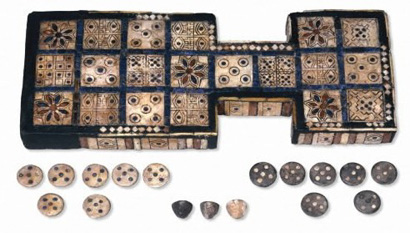
S’n’t (Senet)
Originating in Egypt, it is probably the oldest game in the world. Found in a painting from the tomb of Merkenera, in a painting from the tomb of Hesy, and that of Rashepes. It was believed that a successful player was under the protection of major gods, because of the nature of luck in the game.
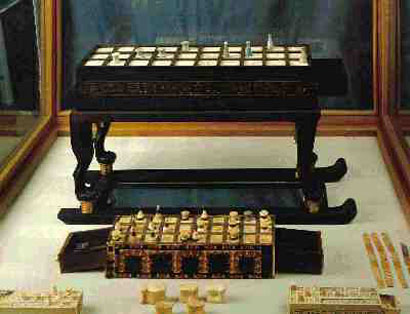
Playing Cards
While the origin of playing cards is not fully understood, it is believed to be that they originated in China, soon after the invention of paper. Many think they were used both as paper currency and gaming tools.
2000 BC
Wei-qi (the Board Game of Surrounding One’s Opponent)
Not only is this one of the oldest games known, it still uses the same rules (making them the longer-lasting game rules). Originating in China, it spread into Korea (renamed Pa-tok, Baduk, Badug) and later into Japan (where it was renamed Go).

1800 BC
Dogs & Jackals
A very complex Egyptian game played by adults and pharaohs. With an ivory board shaped like furniture, with animal shaped legs, a carved palm tree and fifty-five holes, players held ebony pawns that resembled a jackal and a dog’s head. Three coins determined movements, and the objective was to get all of the pieces to win.
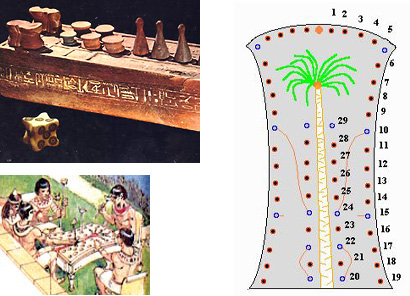
1400 BC
Morris
Simple enough for children, it was mostly played by peasants for 3,000 years. The goal consists of building mills (3-in-a-row) which when completed allowed the player to steal one of you opponent’s pieces. When a player is reduced to two men, s/he looses.
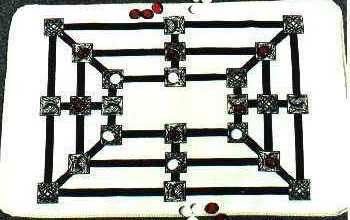
Mancala
Its origin is thought to be Egyptian/African, and is known also under sowing games or count and capture games. It is recorded to have been played by English merchants as early as the 17th century, but has gained most of its popularity in the United States in the last decades.

700 BC
Dice (Earliest records of cubical dice)
Thought to have evolved from knucklebones, they are colloquially referred to as: bones. Made of ivory, bone, wood, metal, stone and nowadays universally plastic it is hard to trace the development of dice. They have been used in the Orient (proved by tomb excavations), they have been mentioned as part of an Indian game (Rig-veda), used for popular gambling in Greece as well as the Romans; Germans would even stake their personal liberty (they were that passionate!), a favorite pastime of knights in the middle ages…
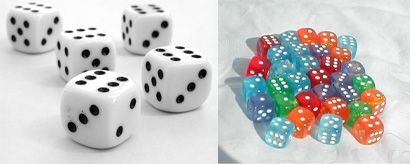
200 BC
Chess
Not a game of chance, it is based solely on tactics and strategy. So complex that not even the best players can consider all contingencies: with 64 squares and 32 pieces, the number of possible games that can be played exceeds the number of atoms in the universe. Its name derives from the Persian word Shah: monarch, many countries claim to have invented the game. The most common belief holds India as the originator, as an offspring from the game Chaturanga (6th century AD). However a similar game of Chinese chess dates back as far as the 2nd century BC.
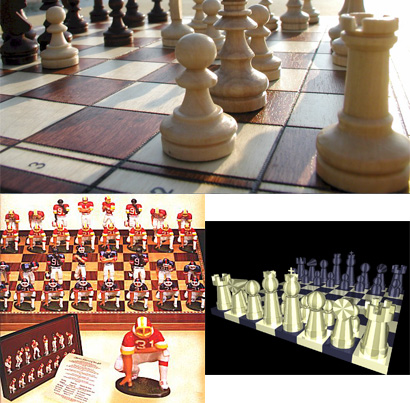
300’s
Nard
Popular in Persia, Muslim countries and with Babylonian Jews, this game is commonly associated with the founder of the Sassanian dynasty. The Talmud contains the oldest known reference of the game, although some claim it refers to the Greek game Kubeia. Played throughout Europe during the middle ages, it was especially popular in English taverns (only to become unpopular with the authorities). It is still played today in many Arab countries.
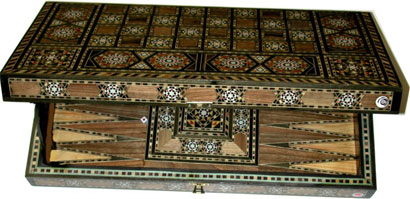
400s
Tabula
The earliest description to be found of this game is in an epigram of Emperor Zeno (476-481 CE). In the 19th century, the rules of this game were reconstructed by Becq de Fouquieres. Tabula (meaning table) is the Roman predecessor to backgammon which, popular as a gambling game and among soldiers, reached Arabia and the Mideast in a short period of time. It is believed to have been Emperor Claudius favorite game, and it is held responsible for the gambling mania that swept through Rome prior to being banned under the Republic.

Hnefatafl (The Kings Table)
Last recorded to have been played in Wales in 1587 and in Lapland in 1723. Its decline began in the 11th Century as chess grew in popularity, and it soon lingered only in remote country districts. Popular during the Dark Ages in Northern Europe and played all over the Viking world.
In the last 10 years the Viking Game has started making a significant comeback, popular with all age groups, but mostly among college students.
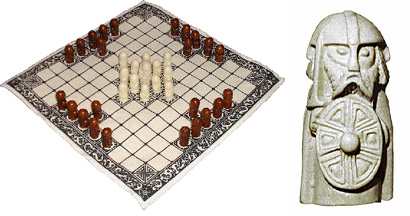
600s
Go (Wei-qi)
Believed to have been developed by a Chinese emperor for his son, whom he thought was in need of some discipline, concentration and balance. A second theory suggests that Chinese warlords and generals would use small stones and map attacking positions.
The internet has increased its modern popularity.
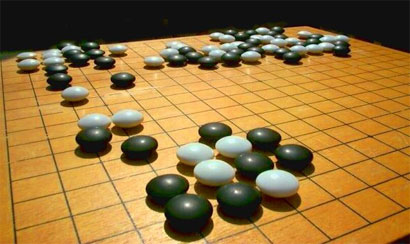
700s
A Persian romance tells of Chess coming from India circa. 650-850 AD
800s
The beginning traces of Mah Jongg can be traced to this time, having started as card games, which as a side note resembled the money used in those days.
900s
Fidchell
Board game from Ireland (Munster) easily compared to Chess (although fairly different).
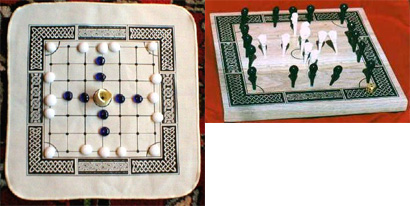
Tawlbwrdd
Played in Wales. Robert ap Ifan documented it in a manuscript dated 1587. It was played on an 11 x 11 board. The rules are somewhat vague, but it is unquestionable that this is a tafl game. (see Hnefatafl).
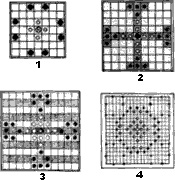
1100s
Draughts
Believed to have originated in the south of France (although some disagree), by a man who combined chess and alquerque.
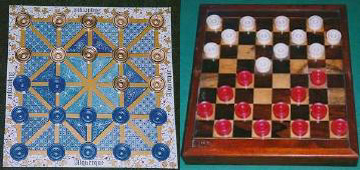
1300s
Playing Cards (again)
It is likely that the ancestors of modern cards arrived in Europe from the Mamelukes of Egypt in the late 1300s, and their use spread rapidly across Europe.
Early decks were created by hand, but this being expensive and time consuming was soon replaced by woodcuts. It was in France, in 1480, that the current hearts, diamonds, spades and clubs originated. With simpler designs, stenciling could be used. While there were several changes in the hierarchy and use of card denominations (queens were the highest card for a while), the joker is an American innovation. Originally created for the game Euchre, it spread along with Poker in Europe and America.
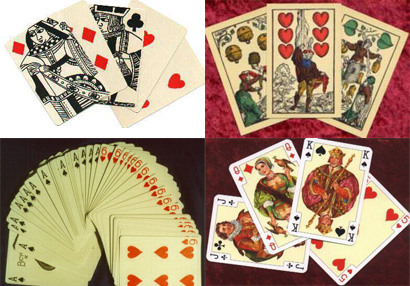
1400s
Tarot
The earliest examples can be found in Northern Italy under the name carta da trionfi or “cards of triumphs”. A system of symbolic images on cards that have been widely used equally for divinatory purposes and trick-taking card games. In the 18th and 19th centuries, the cards became popular in occult studies, initiated by Etteilla and Antoine Court de Gebelin.
Many kinds and decks of Tarot exist and it would be an entire post to dwell into the different categories, their symbolism and their final purposes. Currently it is used as a tool for reflection on life and as an aid to meditation. Carl Jung was the first psychologist to attach any importance to the Tarot, regarding the cards as representing archetypes: fundamental types of person or situation embedded in the subconscious of all human beings.
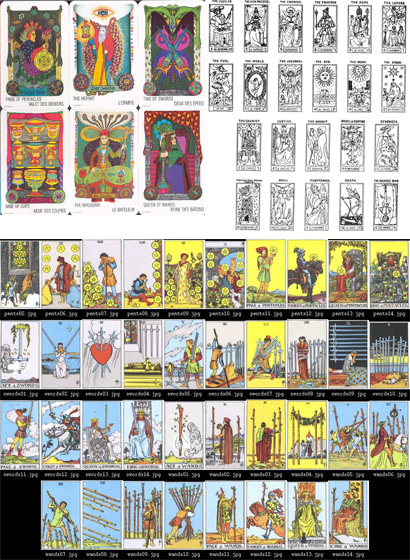
Poch
A three phase card game, currently played in Germany under the name Pochspiel or Pochen and in North America under Tripoli and Three in One. It is believed, by some, to be the ancestor to Rummy Royale and Michigan Rummy.
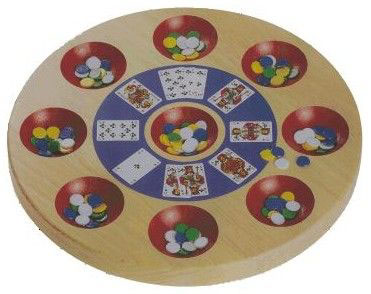
1500s
Game of the Goose
Mostly played in Europe for family entertainment, it is seen as the prototype for many commercial race games of recent centuries. Some say that the game was a gift from Francesco de Medici of Florence to King Phillip II of Spain.
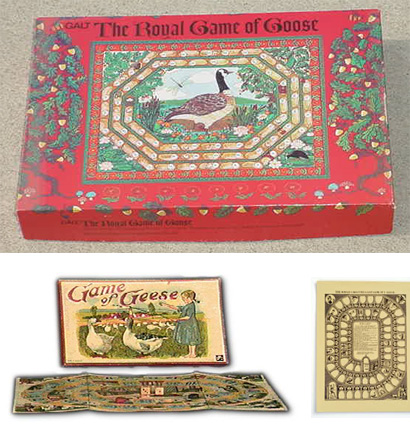
1600s
Cribbage
According to John Aubrey, this game was invented by the British poet Sir John Suckling, as a derived version from the card game called Noddy; it has become one of the most popular games in the English-speaking world. The most identifiable item in the game is its scoring board, a series of holes on a piece of wood or plastic (nowadays) on which score is tallied with pegs.
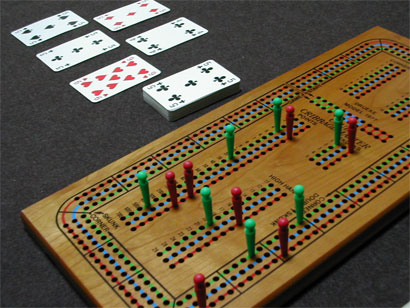
Solitaire board games appear in the court of Louis XI.
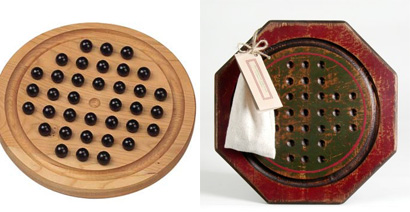
1700s
Pope Joan
Very popular in Scotland during the Victorian era since it did not require betting. The name comes from the myth that Pope John VIII was actually a woman, fact that was discovered when the Pope fainted during a procession and it was discovered that “he” was pregnant.
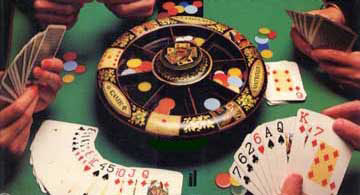
First mention of Solitaire card games within a few years of first records of cartomancy -fortune telling with cards or tarot decks 1765
1800s
Bridge develops from earlier games such as Whist.
1880 - Halma
Invented by the Victorians, the goal was to move all your pieces from your corner to the opposing corner.
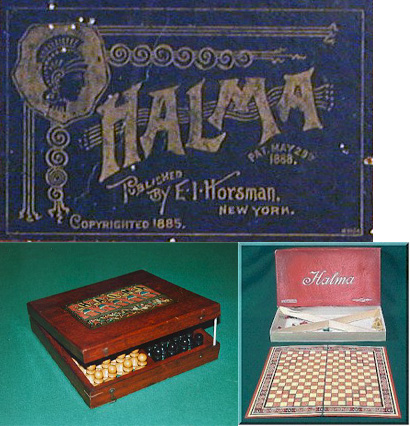
Stern-Halma
Created soon after Halma, it is in principle the same game, only in a star shape.
The Checkered Game of Life (1860)
Designed by Mr. Milton Bradley. A lithographer who’s best selling asset was a portrait of Abraham Lincoln, until he grew his trademark beard and the portrait was no longer in vogue. In need of money he printed several copies of a game he had developed and was back in business in no time.
1896 - Ludo
A westernized and simplified version of Parcheesi was published in England under the name of Ludo, the latin for “I play”.
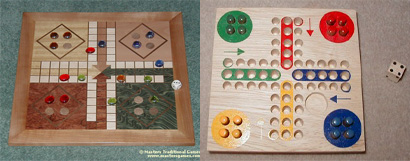
Chinese Checkers are first published in the west in 1892.
1867 - Parcheesi
An American adaptation of the Indian Cross and Circle game, often subtitled: Royal Game of India (since it was created in India around 500 BC, using slave girls as red, yellow, blue, and green pawns on palace grounds). First registered by John Hamilton, this game has been a true success.
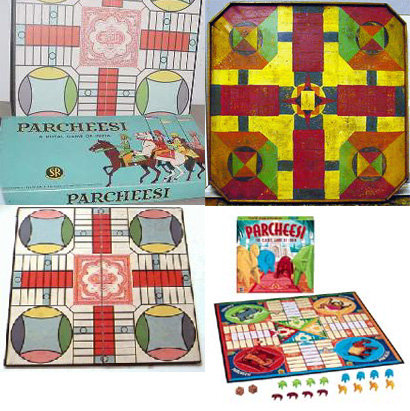
1890s - Snakes & Ladders
With no standard arrangement other than a grid of squares, this game offers as many variations as styles and players. It originated as Moksha-Patamu in India as a game of morality; ladders representing good and snakes symbolizing forms of evil. (i.e. of squares: 12-faith, 51-reliability, 57-generosity, 76-knowledge, 41-disobedience, 44-vanity, 49-vulgarity, 58-lying, 52-drunkedness). It was used to teach children about religion. It was first commercialized in England in the 1890’s.
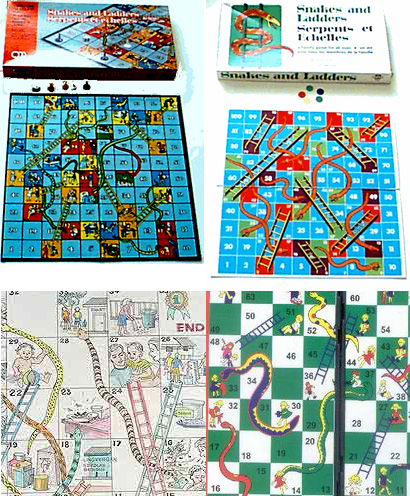
1900’s
The Landlord’s Game -earliest ancestor of Monopoly patented 1904.
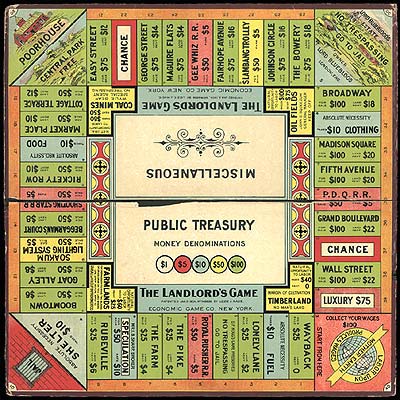
Lexico is invented in 1931, and becomes Scrabble in 1947.
1904 — Monopoly
Created by Lizzie Magie, and patented under “The Landlord’s Game”, she sought to demonstrate how rents enrich property owners and impoverish tenants. It then slowly morphed into Monopoly, name that became popular in the 1920’s, as its popularity spread by word of mouth. True success for this game was found after the 1935 Toy Fair.
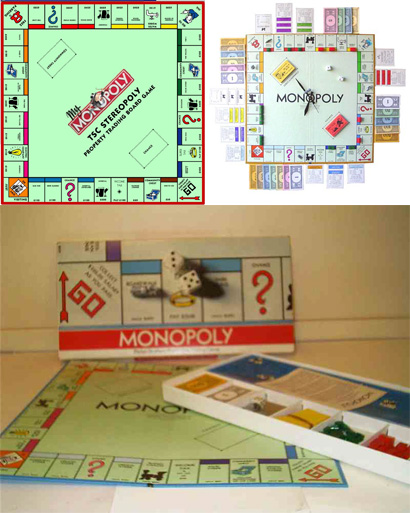
1925 — Bridge
It wasn’t until the 20th century that Bridge really caught swing. It was in 1925 that Harold Stirling Vanderbilt wrote down his rules that it became popular.
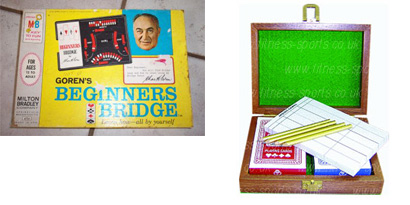
1928 — Chinese Checkers
Stern-Helma was launched in the United States under the catchier name of Chinese Checkers by J. Pressman. Milton Bradley patented the game in 1941. The main difference being the layout, from a square setup to a star format.
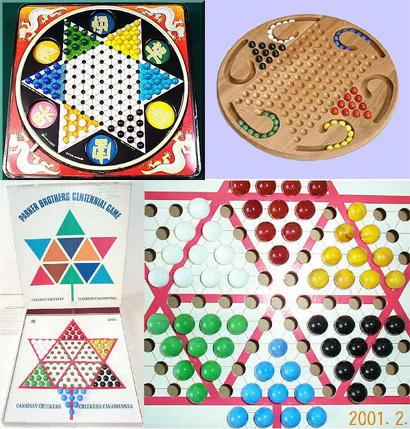
1920 — Mah Jongg
Having originated during the Tang Dynasty in china, its origins can be linked to the aristocracy, and the rules were kept secret until China became a Republic. It wasn’t until 1920 that the game crossed Chinese borders and spread, starting by the United States.
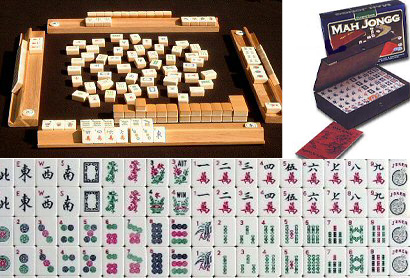
1934 - Sorry!
Unaccredited. A variant of Parcheese, where players compete to go around the board and into their home space by knocking opponents’ pieces of the board (Sorry!) forcing them to start again.
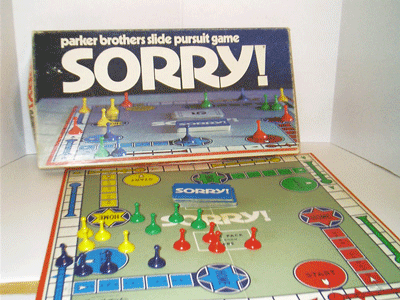
1949 - Scrabble
Designed by Alfred M. Butts (an unemployed architect), he sought to create a game that combined chance and skill, and combining features of anagrams and crossword puzzles. First called Lexiko, then Criss Cross Words, and finally Scrabble: to grope frantically.
Note: One-hundred million sets sold world-wide (and found in one of every three American homes).
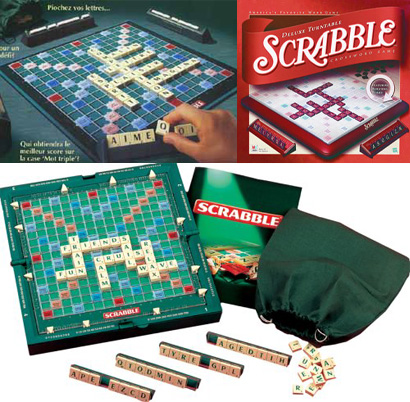
1949 — Clue (or Cluedo)
The first popular mystery-themed game was designed by Anthony Pratt, a solicitor’s clerk. Revolving around Who Killed Mr. Boddy? The mystery needs to be resolved by going room by room in a mansion seeking clues and the final outcome. One question does remain unanswered to this day: Why was Mr. Boddy killed?
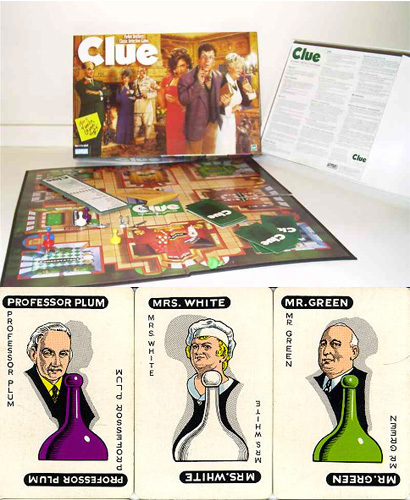
1952 — Mr. Potato Head
George Lerner first wanted to sell his idea as a cereal promotion, as a premium incentive in the late 1940s. When this did not work he sought Hasbro. This was the first toy to be sold through national TV. Mrs. Potato Head was introduced a year later (and no, there was no rib involved).
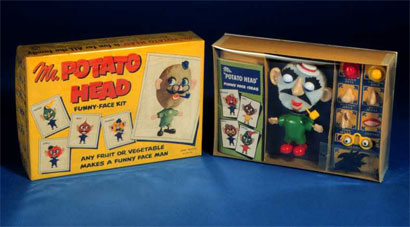
1956 - Yahtzee
Designed by a wealthy Canadian couple to play abroad their yacht, they approached Mr. Edwin S. Lowe (who made a fortune selling Bingo games) who offered to buy the rights. He changed the name from Yacht, to Yahtzee; started advertising but with no success, and after demonstration parties where people could play the game sales went up.
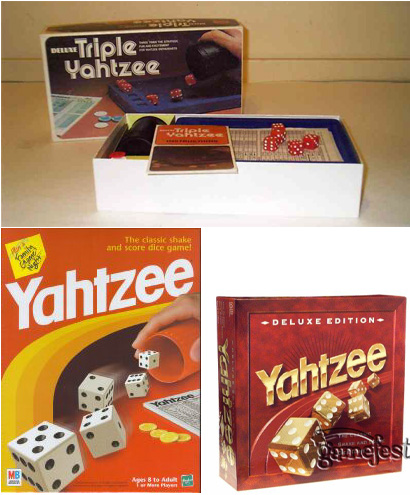
1959 - Risk
Simple and abstract, Risk was developed by Parker Brothers. Without trying to simulate military strategy, it does manage to convey how large the world can be, what happens when good/bad luck strikes, national psychology and rivalry. Alliances might be your best asset for this game, and so is diplomacy and growing trust.
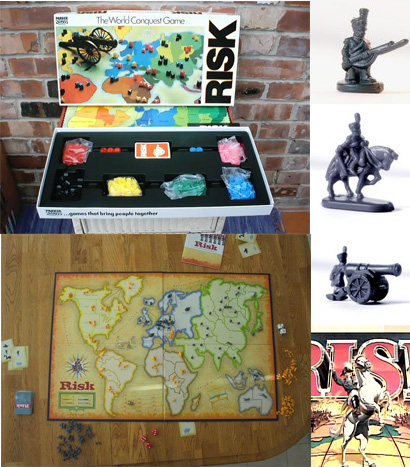
1960 - Life
Reuben Klamer, a game inventor was asked to develop a game to celebrate Milton Bradley’s 100th anniversary. Inspired by the Checkered Game of Life, he develop The Game of Life.
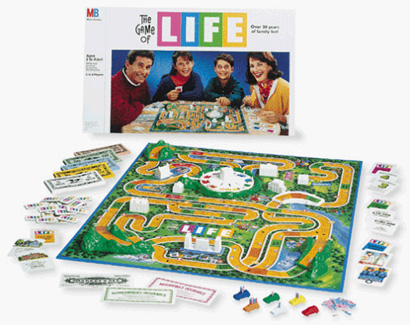
1966 - Twister
Designed by Charles Foley and Neil Rabens. Challenging players to use their entire body, this game was an instant hit after Johnny Carson played with Eva Gabor on The Tonight Show. The ultimate dexterity game, the University of Massachusetts at Amherst set the Guinness World Record when 4,160 students played it at the same time.
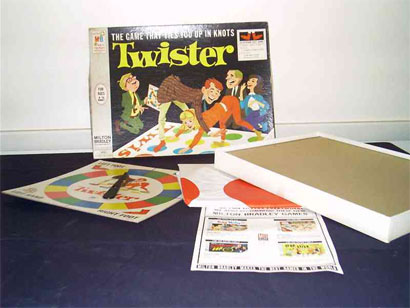
1967 - Battleship
In the beginning, this game was a paper and pencil guessing game between two people. Played on two square grids identified by number and letter. Each player has to guess where the other player’s ships are located in the grid.
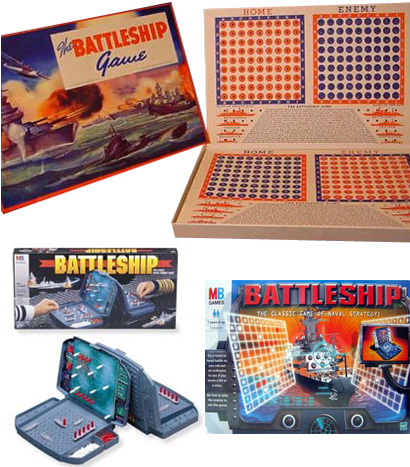
1971 — Uno
Designed by Merle Robbins it is considered on of the 50 most significant games published since 1800.
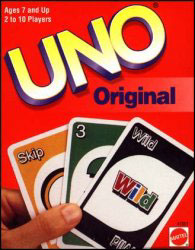
1973 - Dungeons & Dragons
Designed by Gary Gygax and Dave Arneson, it is by far the best-known and best selling fantasy role-playing game (RPG), with an estimate 20 million players. It is influenced by popular Greek and Norse mythology, Robert E. Howard, Edgar Rice Burroughs, Michael Moorcock, Jack Vance and many more.
Its creation marked the start of modern role-playing games, and was the first dice-based system, thus establishing the conventions that have dominated the genre: character records, character development, combat-centered game mechanics, and game-master-centered story development.
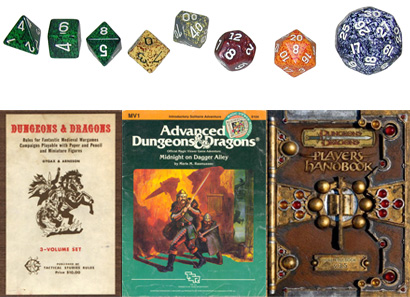
1975 - Othello (Reversi)
This game was introduced in 1975 and credited to Goro Hasegawa (1971), author of How to win at Othello. Prior to this, England was producing a game called Reversi which used the same equipment and main concept.
Note: The first Othello Championship was held in 1977, in Monte Carlo (world champion: Sylvain Perez from France).
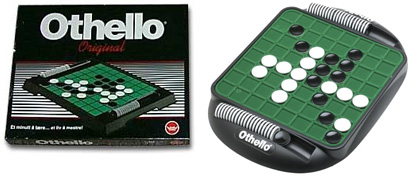
1975 -Payday
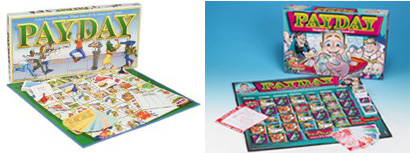
1978 - Pente
A slight simplification from the Japanese game ninuki-renju created by Gary Gabrel. Soon it became an alternative to backgammon (with leagues and international tournaments) and in 1991 it was selected by Games Magazine to be one of the only 20 select “Hall of Fame” winners.
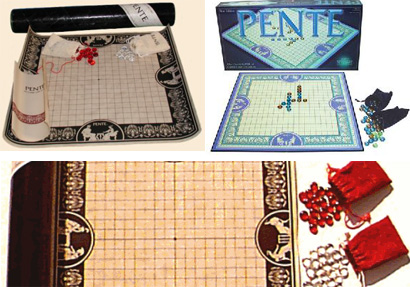
1982 - Trivial Pursuit
Two years prior to its release, creators Chris Haney and Scott Abbot got together for a game of Scrabble in Montreal. As they set up they discovered several pieces were missing, and thus decided they should invent a game of their own. It became an obsession for some in the 1980s.
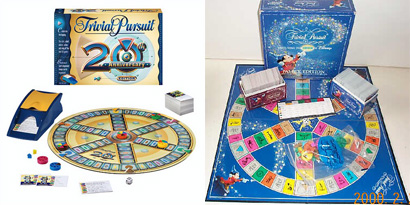
1986 — Jenga
The name derives from the Swahili word for “build”; it was developed by Hasbro.
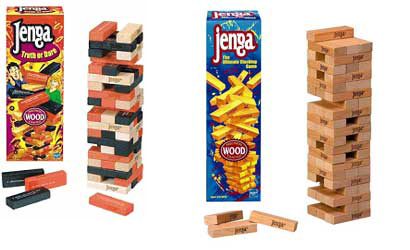
1986 — Pictionary
Designed by Rob Angel, and requiring a minimum of four players, this game pushes each team into illustrating and identifying many things under the pressure of time. Sounds familiar?
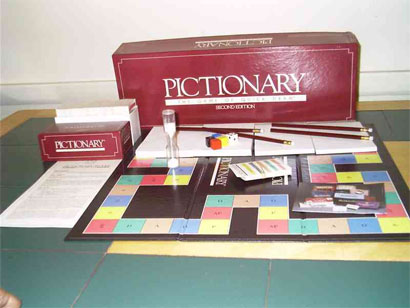
1991 — Guesstures
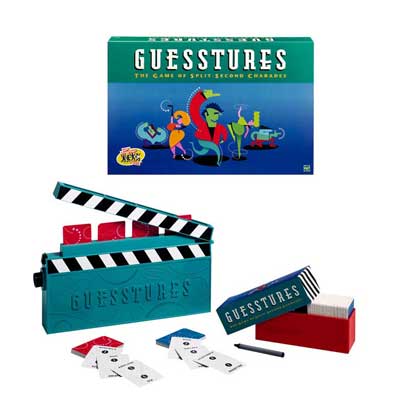

And now I find myself with lots of information and a handy timetable on games. What to do with it? What urged me to explore the subject? As I collected the information I knew I had no controversy to push, no big issue with giving credit where credit is due (I mean who cares, as long as we have fun, right?), there is no agenda… which leaves me to decide the following: do or not do as you please with this information. Boast your knowledge on the origin of Trivial Pursuit when you next play with your in-laws, add your favorite games to my list or simply remember those rainy afternoons around the dining room table… what are you waiting for? Go get you some games!

I am sure there are many games you are familiar with that are not included on this list, so please fill in the gaps and share what your childhood favorites were and any stories or background that relate to them. Thanks!

Thank you to Google Images for their help in finding the great visuals that accompany this essay.









Thanks, Bryony. Great research. What a wonderful set of ancient board games...
On Jun.22.2005 at 09:02 AM